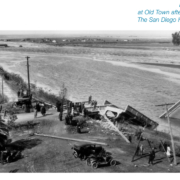San Diego Storm Water Spending Not Nearly Enough, Says City Auditor
Projected infrastructure spending for the city of San Diego’s Storm Water Division isn’t even halfway sufficient to meet future needs, a deficiency that could increase the deferred maintenance backlog and affect the city’s ability to meet water quality requirements, according to an audit released Thursday. City Auditor Eduardo Luna said the division needs roughly $891 million to spend on water infrastructure over the next five years, but there’s only $433 million in funds identified over that span.

 Sweetwater Authority Logo 2019
Sweetwater Authority Logo 2019

